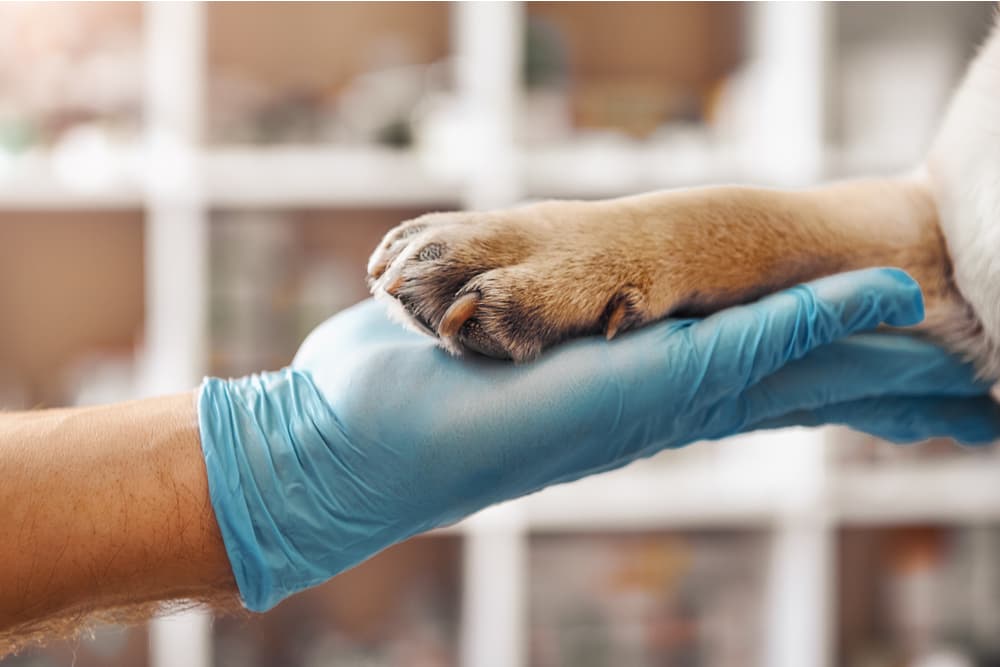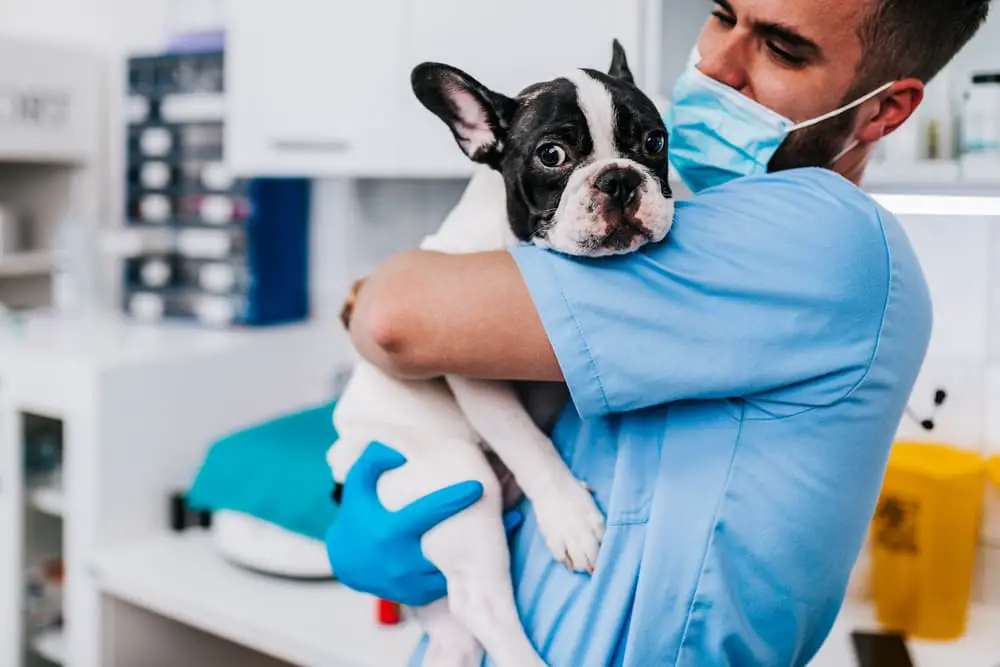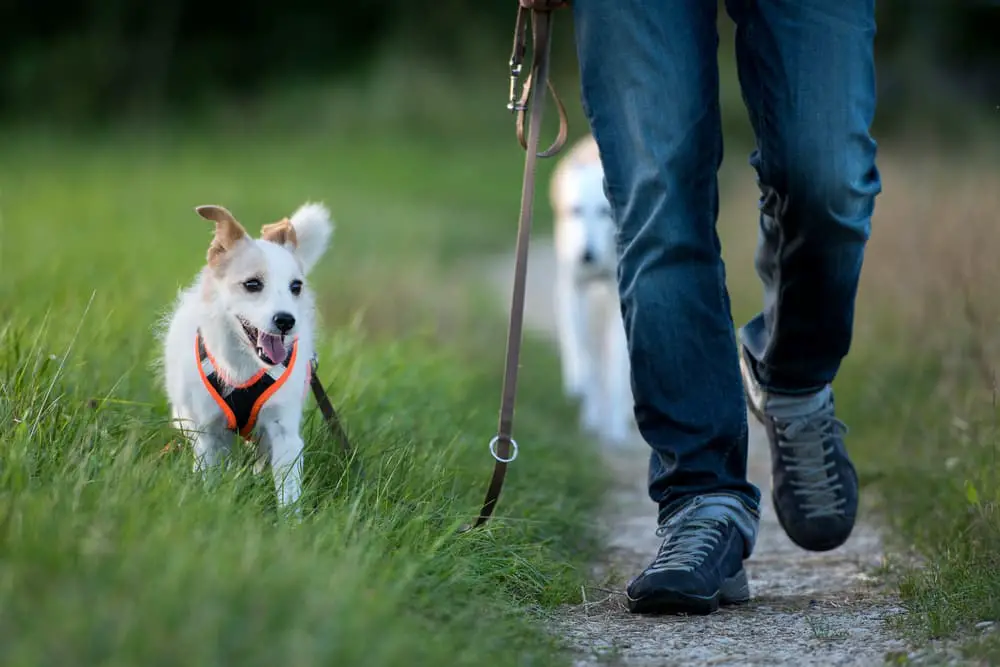“Interdigital cyst” isn’t a phrase most people hear every day. But if you’re a dog parent, the name may ring a bell. The term is generally used to describe a variety of conditions that can affect dog paws, such as a nodule or large bump that develops between a dog’s toes. These lesions tend to be chronic, meaning that they persist for a long time and may even recur after being successfully treated.
Interdigital cysts can be caused by a variety of factors. Because of this, a treatment that works to eliminate one dog’s interdigital cysts may be completely ineffective in another dog. A thorough workup is often needed to diagnose and address the cause of a dog’s interdigital cysts.
What Is an Interdigital Cyst?

A canine interdigital cyst is a bump or swelling that occurs between a dog’s toes. Technically, the term “cyst” is a bit of a misnomer because it relates to a specific type of swelling with a specific type of cell lining, and interdigital cysts do not typically have that structure. However, in common veterinary practice, the diagnosis of an “interdigital cyst” can apply to a variety of non-cancerous swellings that may occur between the toes.
Dogs are more prone to develop interdigital cysts on their front paws than on their rear paws. They typically appear as a raised, reddish-purple swelling of the skin. If interdigital cysts become traumatized, they may begin to ooze blood or pus.
Some breeds are more prone to developing interdigital cysts than others. Predisposed breeds include English Bulldogs, Great Danes, Chinese Shar-Peis, Labrador Retrievers, Basset Hounds, Mastiffs, Bull Terriers, and Boxers.
Causes of Interdigital Cysts on Dogs

Interdigital cysts are typically associated with a bacterial infection, although there are a variety of underlying causes behind such an infection. When bacteria enter a hair follicle, the follicle becomes inflamed and swollen. Over time, the hair follicle can actually burst, which can lead to a deep infection below the skin.
Many cases of interdigital cysts are associated with allergies. Dogs that have environmental allergies tend to lick their paws frequently in an attempt to relieve itching and inflammation. This frequent licking can lead to skin trauma and damaged hair follicles, leaving dogs at risk of developing deep bacterial infections and interdigital cysts.

Paw trauma can also cause dogs to develop interdigital cysts. If the thick, protective pads of the paw are breached—punctured by a splinter or even abraded by extremely rough pavement, for example—that could allow bacteria beneath the surface. If bacteria enter the paw between the toes, the dog may develop interdigital cysts.
Body type and paw structure can influence interdigital cyst formation. Dogs that are overweight are more prone to develop interdigital cysts because they put more pressure on the paws when walking. Similarly, dogs with mobility issues or abnormal paw conformation tend to develop interdigital cysts, due to how weight is distributed over the surface of the paw.
A dog’s coat type can also play a role in the development of interdigital cysts. Short, brittle hair is more likely to break off and become lodged in the skin. (If you have ever suffered a hair splinter—a short, sharp hair embedded in your skin—you may know this all too well!) If this occurs, it can lead to the development of an infection and interdigital cysts.
Symptoms of Dog Interdigital Cysts

Interdigital cysts typically look like a swollen, red bump between the toes. Although interdigital cysts occur on haired skin, you may notice hair loss on or around the swelling. Dogs with interdigital cysts may limp on the affected foot, due to pain. They may also lick and chew at the affected area.
Your veterinarian may be able to diagnose interdigital cysts based solely on their physical appearance during a routine exam. However, further diagnostic testing may be needed to rule out other conditions (such as skin tumors) and to determine the underlying cause of your dog’s interdigital cysts.
Interdigital Cyst on Dogs: Treatment Options

Because interdigital cysts are often associated with deep infection, they are typically treated with antibiotics. Your veterinarian will likely prescribe a combination of oral antibiotics and topical ointments/shampoos to resolve your dog’s interdigital cysts. Before recommending antibiotics, your veterinarian may first perform a bacterial culture and sensitivity testing to ensure that they are prescribing the most effective interdigital cyst medication for your pet.
Your veterinarian may also recommend a corticosteroid or a non-steroidal anti-inflammatory medication. These medications decrease swelling and inflammation associated with your dog’s interdigital cysts. Not only will this help make your dog more comfortable, but it will also decrease self-trauma that can occur when your dog licks at a painful paw. If your dog is known to lick or nibble at their paws a lot, ask your veterinarian about an e-collar (or Elizabethan collar) to prevent further self-trauma.

In some cases, veterinarians recommend surgery to address interdigital cysts. The goal of interdigital cyst surgery is to obtain a tissue biopsy, which can be used to confirm the presence of an infection and rule out the possibility of a cancerous tumor.
Additionally, surgically exploring your dog’s interdigital cyst can help your veterinarian ensure that no foreign body (such as a splinter) is causing the persistent infection and inflammation. The goal of surgery isn’t to pop or drain the interdigital cyst (which would only cause it to recur), but to gather more information that can be used to provide more definitive treatment.
Home interdigital cyst remedies, such as apple cider vinegar or peroxide, are not recommended. These products are intended solely to clean the surface of the skin. Topical cleaners will not cure the deep bacterial infections associated with interdigital cysts.
Preventing Interdigital Cysts on Dogs

The prevention of interdigital cysts requires addressing the underlying cause of a dog’s cysts. If your dog’s interdigital cysts are due to trauma, your veterinarian may recommend altering your dog’s walking surface to minimize irritation to the paws. Interdigital cysts associated with allergies require aggressive management of the dog’s underlying allergies, using maintenance medication or hyposensitization therapy. Weight loss can help in dogs with obesity, and treatment for osteoarthritis may be beneficial in dogs with mobility issues. Talk to your veterinarian to determine the best preventative measures for your dog, so you can keep interdigital cysts at bay.
The post Interdigital Cyst on Dogs appeared first on Great Pet Care.








